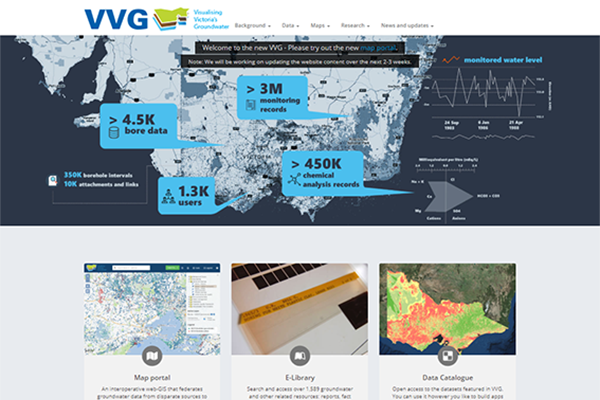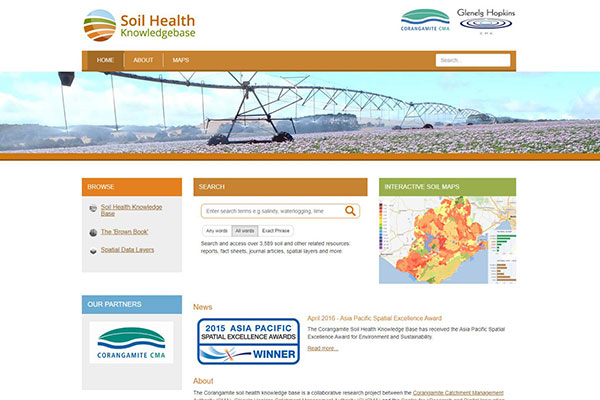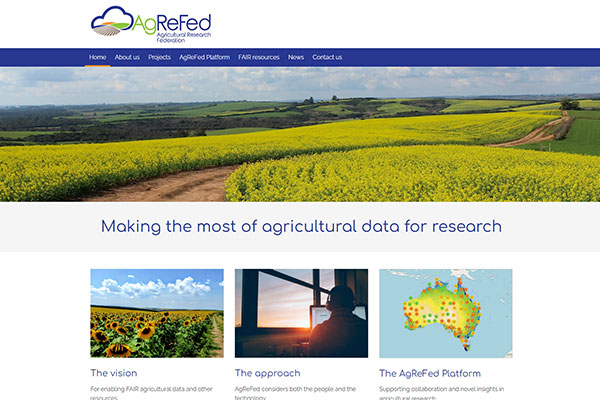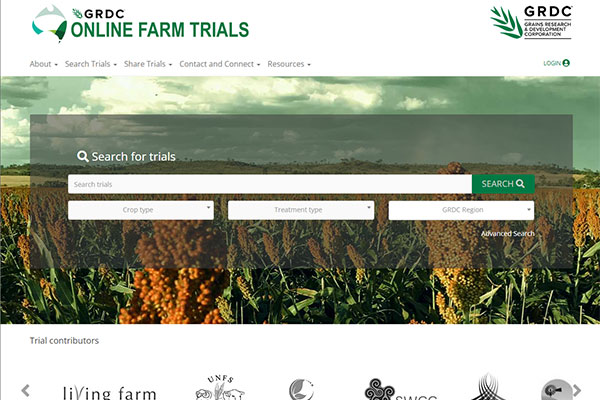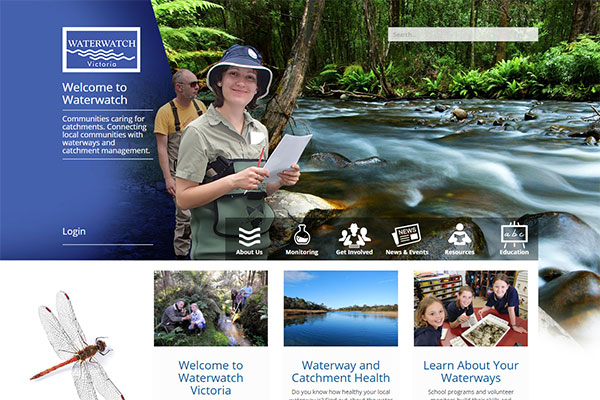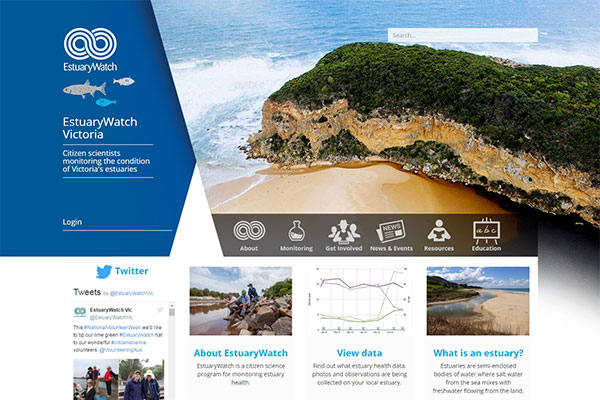CeRDI Newsletter Spring 2023
CERDI 25 YEAR ANNIVERSARY SPECIAL
CeRDI 25: A story of growth and success
CeRDI is a thriving Research Centre, one of six across Federation University, and certainly one of the most successful. Its history spans 25 years, from small but important beginnings, to a research Centre of national acclaim and with a robust reputation for innovative research and technology. CeRDI’s ‘can do’ attitude provides the foundation from which new opportunities for research - across a range of key industries and core partnerships - has led to its ongoing success, evident, more than ever in the CeRDI of today.
A timeline has been developed to mark CeRDI’s achievements, celebrating many milestones since 1998. The timeline is available via our website: https://www.cerdi.edu.au/CeRDI25#timeline
CeRDI 25: 5 of our best projects
We’re commencing a series of stories to demonstrate the unique and important research and technology achievements that have occurred throughout CeRDI’s eResearch journey.
In this issue we present five projects, showcasing a little about each project and what has made them so successful, and highlighting the progressive expansion of skills linked to research and technology.
-
Visualising Victoria’s Groundwater (VVG):
VVG is an online, real-time, centralised site for Victoria’s ground water information. VVG consolidates data from over 400,000 bores from four authoritative sources together with Victorian aquifer information with features that include spatial visualisations, hydrogeological models and historical records and maps. Using the interoperable technologies and high-speed broadband CeRDI was able to successfully capture, aggregate and spatially depict Victoria's groundwater systems within a single, comprehensive and publicly accessible web portal. The ease of access and exploration of Victoria’s groundwater data allows VVG to be readily adopted by water users, resource managers, landowners, and conservation groups. This innovative technology can be used to inform decisions about managing consumptive water use and environmental water flows. The project is enduring and has a national reputation gaining wide acclaim from the technology and science industries. These elements led to culmination of several state and national awards, and significant and notable publications. VVG has spawned many similar CeRDI projects that have achieved similar levels of success.
Key outputs:
Dahlhaus, P., Murphy, A., MacLeod, A., Thompson, H., McKenna, K., & Ollerenshaw, A. (2016). Making the invisible visible: The impact of federating groundwater data in Victoria, Australia. Journal of Hydroinformatics, 18(2), 238-255. doi: 10.2166/hydro.2015.169 
Awards: Merit recipient 2013 National iAwards (Regional category); Finalist in the 2013 Asia Pacific ICT Alliance (APICTAs; Sustainability and Environmental Technology category); Finalist in the 2013 Australian and New Zealand Internet Awards (ANZIAs; Innovation category).
www.cerdi.edu.au/VisualisingVictoriasGroundwater
Soil Health Knowledge Base
The Soil Health Knowledge Base (SHKB) is a repository of soil health information for the Corangamite Catchment Management Authority (CCMA) and the Glenelg Hopkins Catchment Management Authority (GHCMA). The SHKB provides detailed soil data including information that has been collected in the Corangamite region for 80 years. It assists land managers and other stakeholders to implement catchment management plans across the region and assists the broader community to better understand the value of the soils of the Corangamite region. This enduring project yielded a major award, publications and established CeRDI’s reputation across the local region, and nationally. This project led to CeRDI's involvement in a Soils Interoperability Experiment (under the auspices of the Open Geospatial Consortium) to harmonise existing global soil information interchange standards and demonstrate the technology to interoperate between disparate systems.
Key outputs:
Dahlhaus, P., Nicholson, C., Ryan, B., MacLeod, A., & Milne, R. (2018). Liberating soil data for profitable agriculture and catchment health in the Corangamite region, Australia. New Zealand Journal of Agricultural Research, 61(3), 333-339, DOI: 10.1080/00288233.2018.1432491  .
.
Robinson, N., Dahlhaus, P., Wong, M., MacLeod, A., Jones, D., & Nicholson, C. (2019). Testing the public‐private soil data and information sharing model for sustainable soil management outcomes. Soil Use and Management, 35: 94-104. doi: 10.1111/sum.12472 
Awards: 2015 Victorian Spatial Excellence Award; 2015 Asia Pacific Spatial Excellence Award.
www.cerdi.edu.au/SoilHealthKnowledgeBase
Agricultural Research Federation (AgReFed)
AgReFed has been implemented to bring institutions engaged in agricultural research together to work on solutions to problems facing the sector with a particular focus on data management practices. AgReFed supports collaboration and innovation in agricultural research, development, and policy by improving the discoverability of trusted, reusable, and analysis-ready agricultural research data across Australia.
Australian Research Data Commons (ARDC) funded CeRDI to lead the Agricultural Research Federation (AgReFed) Platform to transform data management in agricultural research. The Platform project built on previous AgReFed efforts which integrated biological and yield data with time-series environmental data, sensor data, hyperspectral imagery data, and spatial data, through the implementation of data exchange and metadata standards, controlled vocabularies, and services over the data. The AgReFed Platform set about to build capacity within the agricultural research community by developing a platform and training material to enable scripted, repeatable data analysis of agricultural and complementary datasets.
This project has clearly consolidated CeRDI's role in social architecture and further established our collaborations with Australian Research Data Commons, CSIRO and other national universities.
www.cerdi.edu.au/AgReFed
Online Farm Trials (OFT)
OFT digitally transforms trial research information for Australia’s grains industry. A collaborative research project with the Grains Research and Development Corporation (GRDC), OFT is unique, providing advanced spatial search and filtering functionality to enable growers, advisors, and researchers to rapidly find published research trials that are likely to be useful in assisting decision making. Spatial integration of other relevant location-based grains, soil and climate data from complementary national, state, and regional databases provide more comprehensive and relevant detail to support users in their trial search. OFT contains over 6,000 trial projects from 90+ contributors, with current and legacy data publicly available from the portal. OFT represents a landmark project that has established and cemented CeRDI’s national reputation with the agricultural industry and has provided an important and enduring relationship with GRDC and has established strong collaboration and engagement with stakeholders across the Australian grains and cropping industry.
Key outputs:
Ollerenshaw, A., Murphy, A., Walters, J., Robinson, N., & Thompson, H. (2023). Use of digital technology for research data and information transfer within the Australian grains sector: A case study using Online Farm Trials. Agricultural Systems, 206, 103591. doi.org/10.1016/j.agsy.2022.103591 
Walters, J., Milne, R. and Thompson, H. (2018). Online Farm Trials: a national web-based information source for Australia grains research, development and extension. Rural Extension and Innovation Systems Journal, Vol. 14 (1), 117-123.
Awards: 2016 Victoria Spatial Excellence Award: Spatial Enablement.
www.cerdi.edu.au/OnlineFarmTrials
Waterwatch and EstuaryWatch
Both Waterwatch and EstuaryWatch are well-established, important community engagement programs promoting interest in water issues including sustainability, water management and the health of local waterways and connecting local Victorian communities. Waterwatch facilitates citizen science and community involvement in river health and sustainable water practices. Waterwatch community members are encouraged to become participants in their local environment through waterway monitoring and ongoing activities.
EstuaryWatch promotes the monitoring of estuary health at 21 active Victorian estuaries and is supported through involvement of local catchment management authorities. Both programs rely heavily on community and volunteer contributions to assist with regional data collection and recordings of water quality across Victoria's rivers and waterways. Waterwatch and EstuaryWatch was one of the first major data management and the engagement projects that CeRDI worked on in citizen science. Both projects extend the website-based, knowledge base to incorporate data sharing and further established CeRDI's expertise for projects in citizen science and data visualisation. This has led to a suite of other citizen science projects including River Detectives, the National Waterbug Blitz, the Yarra Catchment Atlas and LitterWatch Victoria.
Key outputs:
Bonney, P., Hansen, B., & Baldwin, C. (2023). Citizen Science and Natural Resource Management: A Social Network Analysis of Two Community-Based Water Monitoring Programs, Society & Natural Resources, DOI: 10.1080/08941920.2023.218344 
Awards: EstuaryWatch awarded the 2018 Victorian Coastal Award: Community Engagement
www.cerdi.edu.au/WaterwatchandEstuaryWatch
CeRDI 25: A new professor and an enduring team
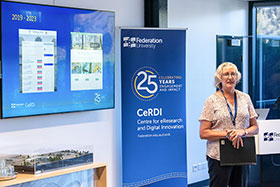 |
|
|
Professor Helen Thompson presenting at
CeRDIs 25-year anniversary forum
|
|
| |
|
CeRDI success is demonstrated through the sustained growth of the CeRDI team. Much like the Centre itself, the CeRDI team has grown and evolved, resulting in a unique team of multidisciplinary researchers, research support staff and technologists. All have contributed to the successes of the Centre.
CeRDI Director, Helen Thompson, and Technical Manager, Andrew MacLeod, both joined the Centre in 1999. Although commencing on short-term contracts, they spearheaded many of the subsequent projects that became the hallmark of the Centre’s contribution and achievements and often introduced new technologies to support organisations that had the interests of community in focus.
-
It was therefore with significant excitement, that CeRDI recently celebrated the news that Helen Thompson has been appointed Professor. This promotion recognises the dedication and hard work that Helen has given to the Centre and the University. Helen has not only brought in funding, staffing and led the reputation of CeRDI in her role as Director, but has done so with professionalism, consideration and a passion for the role and the region. For those that have known and worked with Helen over the years, we acknowledge and applaud this promotion achievement, which represents the best of jobs done well.
Many of the CeRDI team have also had a long and distinguished history with CeRDI. In the early 2000s, numerous technical and project support roles were established in the Centre. Some of these staff remain an integral part of CeRDI today, providing and sharing their extensive experience and knowledge with colleagues and project partners alike. Craig Briody, Paul Feely, Heath Gillett, Jennifer Corbett and Scott Limmer were early appointments in the Centre and have remained at CeRDI, in similar or new roles, providing stability and maturity in the Centre. They are also particularly important to our partners, many of whom have established strong connections with key staff over many years.
As the Centre’s focus on research has grown, so too the growth in the research team. Peter Dahlhaus provides extensive research experience and the vision to lead CeRDI’s flagship projects which have built our eResearch expertise and capabilities including Visualising Victoria’s Groundwater and Visualising Australasia’s Soils. Rob Milne, Birgita Hansen, Nathan Robinson, Megan Wong and Alison Ollerenshaw have each brought unique capabilities to the research team and continue to support the great work the Centre alongside new research staff, and former team members.
The commencement of higher degrees by research (HDR) cohort at CeRDI has seen successful candidates complete their research and grow their careers (we’ll share their story in the next issue of the newsletter).
CeRDI today is a team of 31 staff, comprising 20 researchers and research support staff, 10 technical staff, and a research coordinator. Seven candidates represent the current cohort of HDR students.
In commenting on the CeRDI team, Prof Helen Thompson said that
the Centre’s reputation for innovation, research and technology is built upon hard work and building strong connections and partnerships that the CeRDI team have established and sustained with community and industry over many years.
CeRDI 25: Celebrating CeRDI
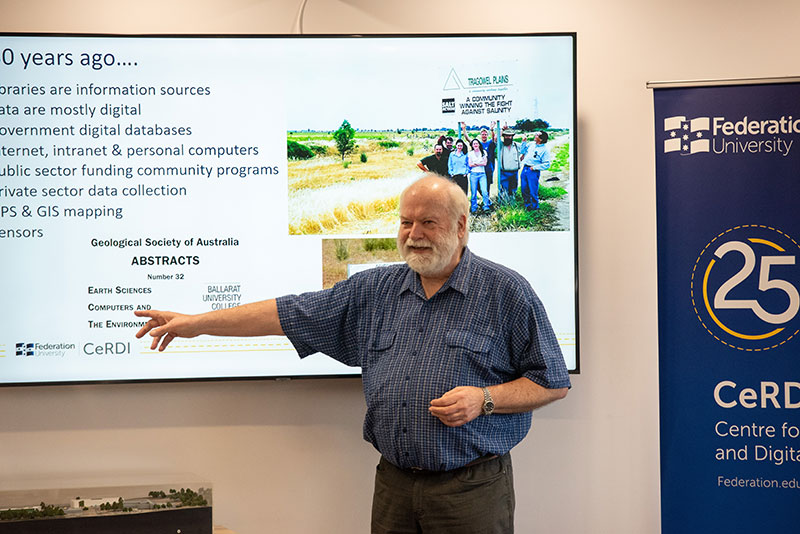 |
|
|
Associate Professor Peter Dahlhaus presenting at
CeRDIs 25-year anniversary forum
|
|
| |
|
In November, CeRDI’s 25-year anniversary was commemorated with a special forum showcasing research and technology achievements over the years. The forum included participation from industry partners, senior leadership at Federation, the CeRDI team and members of the Federation University community.
Guest speakers presenting at the forum included: Keith Russell, Director Outreach, Australian Research Data Commons; Bret Ryan, CEO Southern Farming Systems; Chris Pitfield, Investigations & Program Development Manager, Corangamite Catchment Management Authority; and Dr Michael Crawford, CEO, Soil CRC. Federation’s Prof Chris Hutchison and CeRDI’s Prof Helen Thompson, Assoc Prof Pete Dahlhaus and Dr Birgita Hansen each spoke about the Centre’s history and its research, data and technology achievements.
CeRDI’s anniversary will continue to be celebrated in different ways over the coming months. We’ll keep you posted about these through our socials, website, and our newsletter.
Details about the event and photos from the forum are available here: www.cerdi.edu.au/cb_pages/news/CeRDI-25-years.php.
CeRDI 25: Commemorative video
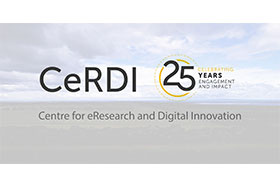 |
|
|
CeRDI 25-year anniversary video
|
|
| |
|
A commemorative video has been produced to mark the Centre’s 25th anniversary.
The video showcases CeRDI, it’s staff and projects and features Helen Thompson and Pete Dahlhaus sharing the CeRDI story, from its earliest beginning to becoming a global leader in data interoperability. Some of the Centre’s many award-winning, web-based spatial information and knowledge portals are highlighted and celebrated in the video, shining a strong light on the centre’s achievements leading to the provision of public access for data sets often hidden from view.
Helping agricultural organisations and communities adopt new technologies is at CeRDI’s core. As such, the video showcases CeRDI’s leadership across a range of projects and partnerships in digital agriculture. Similar approaches have also been applied widely across all our research themes, in areas including citizen science, the natural environment, and disaster preparedness and recovery.
CeRDI aims to help organisations understand how new technologies can solve or make things easier in the real world. By applying eResearch and developing innovative digital solutions, the research centre’s expertise bridges the gap between academic research and government, industry and community needs.
To view the video: https://www.cerdi.edu.au/CeRDI25#videos
federation.edu.au/news/articles/bridging-the-gap-between-research-and-real-world-needs 
Soil Indicators project: Making sense of soils
Farmers, agronomists and researchers are invited to participate in a project that looks at the factors influencing their decisions about soil indicators – the tools that evaluate soil performance and help farmers make informed decisions about soil health on their property.
Soil indicators are observations, assessments and measurements farmer-producers use to get essential information about the physical, chemical, and biological properties of soils. These indicators help farmers understand how soil performs for different enterprises and regions.
Soil health plays a crucial role in the success of farming. While the application of soil indicators within agriculture is widespread, little is known about the factors farmers use to make decisions about soil indicators on their farms.
-
This project aims to identify what indicators work best for different farming systems and regions and provide information and guidance for growers to pick the best indicators for their production systems.
The research, led by Dr Nathan Robinson, Assoc Prof Peter Dahlhaus, Dr Alison Ollerenshaw, Dr Aakansha Chadha and Jennifer Corbett from the Centre for eResearch and Digital Innovation at Federation University (CeRDI), is supported by the Soil CRC.
Dr Robinson says the project aims to help growers, advisers and scientists identify the best indicators for their needs and location.
The research team is using a survey to collect insights from land managers and other agricultural stakeholders, to help identify what suite of indicators are used to measure soil performance for different enterprises and farming systems.
A key focus of this survey is really trying to engage farmers to find out what indicators they are using, but also understanding what they are interested in,"
Dr Robinson said.
In essence, it's a 10-minute online survey and hopefully we will get responses from sugarcane growers in Queensland, to dryland cereal growers in Western Australia and everything in between.”
The project aims to identify ‘what works where’ to be able to provide growers with information and guidance in selecting the best indicators for their production system in their region.
We are using the horses-for-courses analogy, some things are likely to be more useful in some systems than others
Dr Robinson said.
The research team hopes to get several hundred responses to the survey, which is available as a digital and hard-copy version.
The research, conducted in partnership with Charles Sturt University and the University of Newcastle, will also explore whether alternative indicators might better match farming practice needs.
The research project is also an opportunity for farmers to confidentially share their insights about the soil indicators they use and the factors that have informed these choices,
Dr Robinson said.
Farmers can also provide feedback on what information they have used – or not used – about the soil indicators and how this has guided their farm management practice.
This research is part of the Soil CRC's Matching Soil Performance Indicators to Farming Systems project.
For more information:
Making sense of soil indicators - Federation University Australia 
To participate in the research: https://federation.syd1.qualtrics.com/jfe/form/SV_5uTp0VkYuVJAbl4 
Latest news from Visualising Australasia’s Soils
Visualising Australasia’s Soils  (VAS) is providing farmers, agronomy practitioners, agricultural researchers and agribusinesses with place-based information via an online platform with access to data, information and knowledge on Australasian soils. The VAS web portal
(VAS) is providing farmers, agronomy practitioners, agricultural researchers and agribusinesses with place-based information via an online platform with access to data, information and knowledge on Australasian soils. The VAS web portal  facilitates the discovery and sharing of soils information, activities and research from Australia and New Zealand.
facilitates the discovery and sharing of soils information, activities and research from Australia and New Zealand.
The VAS team recently circulated its latest newsletter  of project updates, information, and useful links:
of project updates, information, and useful links:
-
Showcasing VAS Nationally: In June and August, the VAS team attended national conferences, presenting the VAS portal to participants of the Soil Science Conference in Darwin, and the Soil CRC Participant Conference in Launceston, Tasmania. The conferences provided an opportunity to showcase VAS and its role in assessing the impacts of creating a soil data and dissemination system. During the Soil CRC participant conference, VAS project leader Associate Professor Pete Dahlhaus facilitated a steering committee meeting for the project with members of the Soil CRC and VAS project partners. Detailed discussion of the project achievements and further milestones were considered, together with an analysis of VAS impact, and its legacy. The meeting concluded successfully with a-number-of endorsements and recommendations to support project directions over the coming months and years.
Website Developments and Data updates: Planned website developments are currently underway for VAS. The VAS landing page will be updated with a draft design and wireframe for the new webpage under development. The new design, which will be launched in the coming weeks, will better direct user traffic to VAS by quickly linking to the key areas and simplifying the pathways to information with just a few clicks. This will be of benefit to VAS project partners and regular users of the portal, ensuring responses to their information queries quickly and easily. New data has recently been added to VAS with soil moisture probe data now available through the portal. The data has been provisioned by Southern Farming Systems and Agriculture Victoria.
This latest newsletter, which includes other updates, topics and FAQs about VAS can be accessed here  .
.
Yarrowee River History: From Peel to Prest
CeRDI has been working with Federation University historian Dr David Waldron on a web portal to map key points of cultural and historical interest along the Yarrowee River. The project, "Yarrowee River History: Peel to Prest", offers a comprehensive exploration of the historical and cultural significance associated with the Yarrowee River, encompassing the influences of the Wadawurrung Indigenous people and subsequent settlement.
The project was funded by the City of Ballarat and the Victoria Drought Resilience Adoption and Innovation Hub. It focuses on enhancing the environmental quality, local habitat, and overall enjoyment for residents and trail users. It supports opportunities for the telling the multifaceted and diverse histories along the linear stretch of the river, from Ballarat’s CBD to the beginning of the unchanneled river course.
-
A centrepiece of the project is the development of a portal which incorporates content and historical material linked to the river’s transformation during the gold rush of the 1850s. Gold discoveries were located around the Yarrowee River and its tributaries. During this time, substantial redirection of water channels occurred, aligned with the management of natural drainage for the river. This served multiple purposes, including directing water flow to the gold diggings, removing sludge build up and eventually assisting with mitigating the impact of floods across Ballarat as buildings were constructed following on from its tent city origins. CeRDI developed the technical specifications and designed the web portal for the project.
Integral to the project’s success has been the incorporation of first nation’s history. The portal includes statements and content supplied by the Wadawurrung Traditional Owners Aboriginal Corporation (WTOAC) and highlights the connection of the Yarrowee River and its place of significance for First Nations People. The content was guided in its development by the Caring for Country subcommittee of WTOAC.
In commenting on the project, David said that working with traditional owners enabled indigenous history to be the focus of the project and for their story to be highlighted through the portal. “We wanted people using the interactive map to ponder the cultural significance of these gold rush impacts on the Wadawurrung people and the environment. For the Wadawurrung people, the watercourse, now known as the Yarrowee River, carries profound historical meaning. Recognition of the role of the Yarrowee River for traditional owners was essential to recognise and highlight in this project.” The involvement of traditional owners to inform the content for the portal was considered to be essential.
To coincide with the recent launch of the Portal, David Waldron, Shannen Mennen and Kelly Ann Blake wrote an article  about the project and the significance of mining in the 1800s on the Yarrowee River. The story was published in The Conversation. The article was well received and widely read having one of the highest readerships of any article by a Federation University researcher.
about the project and the significance of mining in the 1800s on the Yarrowee River. The story was published in The Conversation. The article was well received and widely read having one of the highest readerships of any article by a Federation University researcher.
Future plans include looking at co-developing peer-reviewed publications with the WTOAC on topics related to waterways and their cultural significance in Wadawurrung Heritage. David is also planning to develop publications on the social history of bluestone construction and further explore the masons' marks used in the construction of bluestone work in the channels. The web portal will provide the foundation for the inclusion of further mapping and sites of interest, expanding our understanding of the river system and its unique role in Ballarat’s history.
yarrowee.cerdi.edu.au 
theconversation.com/in-the-1800s-colonial-settlers-moved-ballarats-yarrowee-river-the-impacts-are-still-felt-today-214949 
CeRDI Writing Retreat
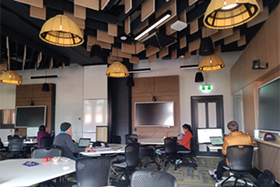 |
|
|
CeRDI Writing Retreat
|
|
| |
|
A two-day writing retreat for CeRDI researchers was held in October to facilitate the preparation of research manuscripts. The retreat was held at the Ballarat-SMB campus of the University and attended by six staff and HDR students, including Aakansha Chadha, Alison Ollerenshaw, Ben Fest, Birgita Hansen, Nathan Robinson, and Pramod Gautam. Participants identified their writing goals prior to attendance and included substantial progress towards journal manuscripts.
Feedback from attendees following the event confirmed that all writing goals had either been achieved or significant progress made. Successful outcomes included:
• One manuscript finalised and subsequently submitted for publication, another paper well progressed and the structure of two papers were developed with Introductions and a Method section completed.
• Data cleaning tasks completed ready to write the final sections of a manuscript.
• Structures were in place for report writing translating to manuscript preparation.
-
In commenting on the retreat, staff and HDR students were very positive about its success, indicating that it was effective in progressing writing and associated activities. It was commented that the writing achievements for the two-days would not have occurred without the allocation of blocks of time dedicated to these tasks. Others also commented on the value of having time for extended discussions with other researchers / manuscript collaborators to plan out, progress and edit a manuscript.
The success of the two days was widely and positively received with calls for future events to be scheduled in 2024 as a combined in person and online session.
Attendees also appreciated the opportunity to work in a different location to their usual office/workspace.
Staff Profile: Richard MacEwan
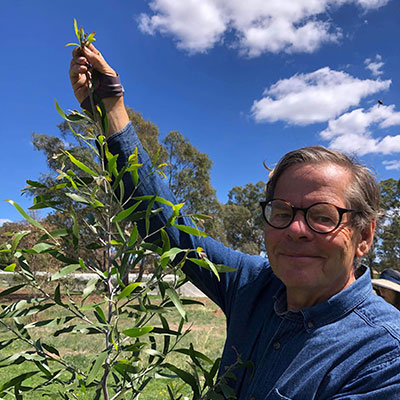 |
|
|
Research Associate:
Richard MacEwan
|
|
| |
|
Richard MacEwan is a soil scientist who carried out teaching and research on soils and land management in Victoria for 28 years before retiring in 2017. Richard has a BSc in Ecology from Edinburgh University (1973) and a MSc in Pedology and Soil Survey (Reading University 1986). Richard's Australian research began at Rutherglen Research Institute with a focus on subsoil drainage, waterlogging and soil structure management. This was followed by a 10-year stint coordinating the Graduate Diploma in Land Rehabilitation at the University of Ballarat (now Federation University). The time at Ballarat was seminal with many advances made by working in partnership with Peter Dahlhaus focussing on landscape hydrology, land degradation and land management. Returning to the Victorian Government in 2001 Richard worked with Nathan Robinson and others on soil and land survey, soil health and soil information. Richard has in depth understanding of soil quality and soil health as it relates to pedology, landscapes and land management practices. Richard lives on a small rural property near Bendigo on soils derived from the Harcourt granodiorite where he battles with rabbits and weeds on his mission to leave the land more ecologically enchanting than when he moved there in 2003. Richard was coaxed out of retirement in a part-time capacity by Peter Dahlhaus to help define practical applications of the data accessible through the Soil CRC Visualising Australasia’s Soils platform.
News snippets
Digital Agrifood Summit  : CeRDI’s Gabi Ceregra was one of 40 experts participating in the Summit in Wagga Wagga in October, in which there were 450 delegates. Gabi was a panel respondent discussing how data sharing and knowledge can achieve industry ambition to become $100bn industry by 2030. Gabi also participated in a session about “Ambition into Action” which focused on examining how Australian Agriculture can turn ambition into action.
: CeRDI’s Gabi Ceregra was one of 40 experts participating in the Summit in Wagga Wagga in October, in which there were 450 delegates. Gabi was a panel respondent discussing how data sharing and knowledge can achieve industry ambition to become $100bn industry by 2030. Gabi also participated in a session about “Ambition into Action” which focused on examining how Australian Agriculture can turn ambition into action.
Gabi is the Data Policy Manager in CeRDI. In this role she supports the Food Agility CRC and the National Farmers' Federation in increasing the uptake of digital technologies in agriculture, by putting in place appropriate data management policies and procedures to encourage trust and data sharing between farmers, ag tech business, and research. Rob Clark, PhD Candidate in CeRDI, also attended the Summit. The Conference wrap up available at: DAS23 Wrap Up: Money never moves - unless there’s profit to be made | Blog | Food Agility CRC 
-
eResearch Australasia Conference, Brisbane 16-20 October, 2023  : CeRDI had a strong presence at the annual eResearch Conference. Helen Thompson, Andrew MacLeod, Jude Channon and Richard Archer were in attendance at the event which was billed as an “opportunity to engage, connect, and share their ideas and exemplars concerning new information-centric research capabilities, and how information and communication technologies help researchers to collaborate, collect, manage, share, process, analyse, store, find, understand and re-use information”.
: CeRDI had a strong presence at the annual eResearch Conference. Helen Thompson, Andrew MacLeod, Jude Channon and Richard Archer were in attendance at the event which was billed as an “opportunity to engage, connect, and share their ideas and exemplars concerning new information-centric research capabilities, and how information and communication technologies help researchers to collaborate, collect, manage, share, process, analyse, store, find, understand and re-use information”.
Graduation: Congratulations to CeRDI’s Dr Aakansha Chadha on her graduation with a PhD from Federation University. Aakansha’s thesis is titled Ecology and management of a tropical invasive weed, Cyperus aromaticus (Navua sedge) in Queensland, Australia.
Since completing her PhD, Aakansha has been employed as a research fellow for digital agronomy and soil science in CeRDI. To read more about Aakansha’s research see: www.cerdi.edu.au/cb_pages/aakansha_chadha.php
HDR news
Recent Publications led by CeRDI PhD Candidate Peter Weir:
Weir, P., & Dahlhaus, P. In search of pragmatic soil moisture mapping at the field scale: A review. Smart Agricultural Technology, 6, 100330. doi.org/10.1016/j.atech.2023.100330 
About CeRDI
The Centre for eResearch and Digital Innovation (CeRDI) is a research centre at Federation University Australia focused on:
- the application of information and communications technology (ICT) and the development of innovative, world class knowledge management systems;
- significantly advancing the digital literacy and knowledge management capabilities of partner organisations;
- fostering partnerships for the development and implementation of eResearch with industry, government and academia; and
- measuring the impact of eResearch and digital innovation through longitudinal research.
Contact CeRDI
For further details about CeRDI’s diverse portfolio of research please visit our website: www.cerdi.edu.au, or contact Director, Associate Professor Helen Thompson: h.thompson@federation.edu.au
Mailing Address
Centre for eResearch and Digital Innovation
Federation University Australia
PO Box 691
Ballarat Vic 3353
Office Location
Suite 15, Greenhill Enterprise Centre
Ballarat Technology Park
University Drive
Mount Helen Vic 3350
Phone: +61 3 5327 9314
Email: support@cerdi.edu.au
Subscribe to the CeRDI Newsletter Mailing List
I would like to subscribe to the CeRDI Newsletter Mailing List to receive notifications of future CeRDI Newsletters.
If you have any feedback, please email newsletter@cerdi.edu.au

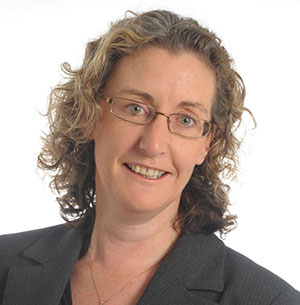
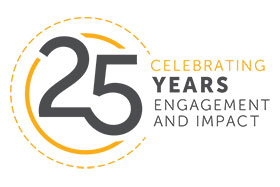
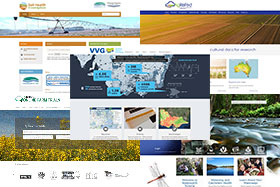



![]()
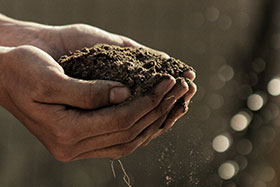
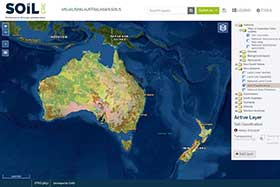
![]() (VAS) is providing farmers, agronomy practitioners, agricultural researchers and agribusinesses with place-based information via an online platform with access to data, information and knowledge on Australasian soils. The VAS web portal
(VAS) is providing farmers, agronomy practitioners, agricultural researchers and agribusinesses with place-based information via an online platform with access to data, information and knowledge on Australasian soils. The VAS web portal ![]() facilitates the discovery and sharing of soils information, activities and research from Australia and New Zealand.
facilitates the discovery and sharing of soils information, activities and research from Australia and New Zealand.![]() of project updates, information, and useful links:
of project updates, information, and useful links: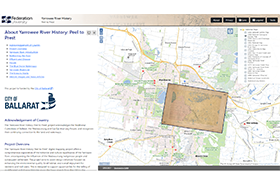


![]() : CeRDI’s Gabi Ceregra was one of 40 experts participating in the Summit in Wagga Wagga in October, in which there were 450 delegates. Gabi was a panel respondent discussing how data sharing and knowledge can achieve industry ambition to become $100bn industry by 2030. Gabi also participated in a session about “Ambition into Action” which focused on examining how Australian Agriculture can turn ambition into action.
: CeRDI’s Gabi Ceregra was one of 40 experts participating in the Summit in Wagga Wagga in October, in which there were 450 delegates. Gabi was a panel respondent discussing how data sharing and knowledge can achieve industry ambition to become $100bn industry by 2030. Gabi also participated in a session about “Ambition into Action” which focused on examining how Australian Agriculture can turn ambition into action. ![]()
![]()

